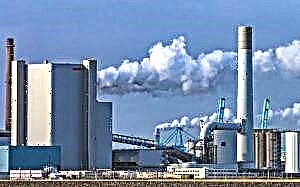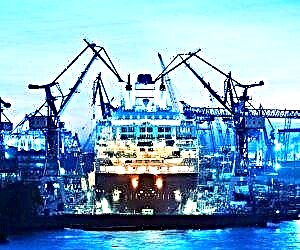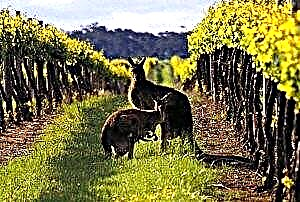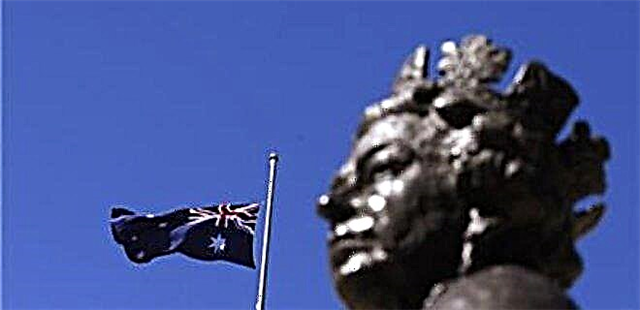The Australian economy has not experienced a recession over the past three decades, and this is an excellent result for a developed country. The gross domestic product (hereinafter referred to as GDP) grows almost every year. Australia is characterized by high potential in the industrial-agrarian and scientific-technical spheres. Every year the government of the country implements dozens of projects aimed at developing mechanical engineering and increasing mining.

The level of development of the Australian economy
One of the main indicators characterizing the efficiency and stability of the economy of any country is the inflation rate. Over the past 2 years, the value of this indicator in Australia has varied within the following limits:
- maximum - 2.1% (July 2021);
- minimum - 1.3% (April 2021).
Achieving a reduction in the inflation rate in 2021 was made possible by the timely and correct distribution of GDP by sectors.
What is the GDP in Australia
In 2021, Australia's GDP was USD 1.318 trillion. The growth dynamics of this indicator over the past 10 years is presented in the table:
 As you can see, this indicator is showing constant growth.
As you can see, this indicator is showing constant growth.
Over the past 10 years, Australia's GDP has increased by 47.57%. Moreover: according to statistics, the economy has not been in recession in the country for 110 consecutive quarters. This is a record among developed countries.
Australia's external debt as of the middle of the third quarter of 2021 amounted to USD 563.06 billion.
Experts explain the downward trend in the country's GDP growth rates in 2018-2019 by the fact that the service sector, which supports the construction industry, lags behind its growth. At the same time, one more important factor should be taken into account - a decrease in the added value of professional services of a scientific and technical nature in the last 3 years.
 The high level of economic development of Australia is confirmed by the fact that per capita GDP is 57,305 USD. In the ranking of countries according to this criterion, it took 11th place at the beginning of 2021. For comparison: Russia was then in 62nd place - USD 11,289 per capita.
The high level of economic development of Australia is confirmed by the fact that per capita GDP is 57,305 USD. In the ranking of countries according to this criterion, it took 11th place at the beginning of 2021. For comparison: Russia was then in 62nd place - USD 11,289 per capita.
Formation of the state budget
The state budget for the fiscal year June 2019 / July 2021 submitted to the country's parliament for the fiscal year June 2019 / July 2021 has a surplus of 7 billion AUD (0.4% of GDP). At the same time, the last time the Australian budget was characterized by a surplus in the pre-crisis 2007/2008 financial year.
The government plans to achieve a surplus by increasing:
- tax revenues;
- earnings from the export of iron ore and coal.
The Australian authorities intend to increase spending on education and health care, as well as reduce the fiscal burden on people with middle and low incomes. To fill the state budget, the fight against tax evasion by multinational companies will continue.
The government is investing about 3.55 billion AUD on the development of state technologies and infrastructure in Australia.
The consolidated budget of the Ministries of Defense and Radio Engineering Defense will reach 38.7 billion AUD (26.16 billion USD).
Take a sociological survey!
Components of the Australian economy
 Australia is the only state in the world that occupies an entire continent, the bowels of which are rich, first of all, in bauxite (about a third of all world reserves). Therefore, the main industry of the country is the mining industry.
Australia is the only state in the world that occupies an entire continent, the bowels of which are rich, first of all, in bauxite (about a third of all world reserves). Therefore, the main industry of the country is the mining industry.
But other areas of economic activity also make a significant contribution to Australia's GDP. Let's consider them in more detail.
Features of the banking system
The first banks in Australia were established long before their own manufacturing industry was established. Bank Of New South Wales is considered the pioneer of banking, which began to conduct operations in 1817. In the country's economy, in terms of the degree of influence, they surpassed the financial organizations of other states.
The main banking monopolies were formed on the territory of the Green Continent at the beginning of the 20th century. They are still in effect.
The creation of the Reserve Bank of Australia (hereinafter RBA) dates back to 1911. At the beginning of its activity, he did not bear any responsibility for the release into circulation in the country of the money supply. The RBA received the authority to issue money only in 1924.
The Reserve Bank of Australia is currently performing the following functions:
- implementation of monetary policy;
- management of the state's gold and foreign exchange reserves;
- regulation of the Australian monetary and banking system;
- issue of national currency.
The article “What is the currency in Australia” will tell you about the formation of the modern currency of Australia, coins and banknotes, exchange rate, exchange possibilities.
The Australian banking system is highly concentrated. The largest are 4 financial institutions:
- Commonwealth Bank of Australia,
- Westpac Banking Corporation,
- Australia and New Zealand Banking Group,
- National Australia Bank.
They account for more than 90% of loans and deposits.
Industry of Australia
Australia is among the highly developed countries. Even with the obvious distance from Europe and America, this state occupies a strong position in the world market.
Every year, industrial enterprises in Australia produce a large list of in-demand goods for use in the domestic market and for export.
The leading four industrial cities of the Green Continent look like this:
- Adelaide. The economy of this city is based on material production and the defense industry. The auto industry is represented by Mitsubishi and Holden.

- Melbourne. In the vicinity of this large industrial center, there are industrial enterprises:
- for the production of agricultural machinery;
- for the production of machine tools;
- automotive industry;
- shipbuilding.
- Sydney. Its industrial sites are located on the north shore of Port Jackson Bay. The production facilities continuously produce large household electrical appliances, vehicles, electronic computers and ships. There is a printing plant and a large shipyard in the suburbs.
- Kalgoorlie. This city is the center of gold mining on the Green Continent. The largest deposit of precious metal is located in the so-called Giant Pit. Gold mining is carried out in an open way. Quartz, albite, pyrite and other minerals are also mined here.
It is necessary to note one feature uncharacteristic for an industrial country: the bulk of the products exported abroad are raw materials. The industrial sector employs about a third of the entire working-age population of the Green Continent.
The situation with professions in which production and the economy of the country as a whole are in short supply is described in the article "The most in-demand professions in Australia in 2021".
In general, the country's economy is characterized by openness and orientation towards the development of innovations. Let's take a quick look at the main industries in Australia.
Features of light industry
 Leading light industry enterprises are concentrated mainly in the southeast of the Green Continent. This segment of production is focused primarily on the domestic market, and uses the local raw material base.
Leading light industry enterprises are concentrated mainly in the southeast of the Green Continent. This segment of production is focused primarily on the domestic market, and uses the local raw material base.
Products made from sheep's wool are exported. It should be noted that Australia is the leader in the world market in the supply of primary processed sheep wool - 30% of its total volume. And the country is not going to give the palm in this sector of the world light industry.
Timber, woodworking and building materials production
The specialization of the forest industry is the development of plantations of large green spaces, which provide the country with more than 2/3 of the total demand for timber. The products of the woodworking industry are represented by:
- paper;
- wood chips;
- lumber;
- wood boards.
Extraction of building materials is carried out by small developments.
In Australia, there are special factories equipped with equipment for the production of pellets and concentrates.
Engineering industry
Mechanical engineering in Australia specializes in the production of:
- cars;
- buses;

- locomotives;
- ships;
- agricultural machines;
- industrial machine tools.
Car production is established in Melbourne, Sydney, Geelong and Adelaide. The production of agricultural machinery is concentrated in Perth, Melbourne, Sydney.
Heavy engineering plants operate in Melbourne, Newcastle, Brisbane.
Shipbuilding is showing significant growth in Australia. The country builds and assembles cargo ships. Concentrated ship shops in the vicinity of Sydney and Melbourne, as well as in the state of Victoria.
Chemical and oil refining industries
The chemical industry of the Green Continent began to develop at a rapid pace from the middle of the 20th century. The most common products in the industry are fiber, synthetic rubber, herbicides, plastics, fertilizers, and explosives and acids.
The main enterprises of the Australian chemical industry are located in:
- Gladstone,
- Melbourne,
- Perth,
- Clyde,
- Sydney.
Over the past three decades, significant reserves of oil and gas have been discovered in Australia. Areas of the continental shelf off the northwestern and southeastern coasts of the continent are especially promising.
 Thanks to the implementation of programs for the development of oil fields, the country is fully self-sufficient in oil products. Moreover: according to the estimates of the consulting company Gustavson Associates, oil reserves in the Arkaring Basin, near the town of Coober Pedy, are 233 billion barrels, which is comparable to the reserves of the "black gold" of Saudi Arabia.
Thanks to the implementation of programs for the development of oil fields, the country is fully self-sufficient in oil products. Moreover: according to the estimates of the consulting company Gustavson Associates, oil reserves in the Arkaring Basin, near the town of Coober Pedy, are 233 billion barrels, which is comparable to the reserves of the "black gold" of Saudi Arabia.
Metallurgy and metalworking industry
The largest iron and steel enterprises are located on the east coast of the mainland - in Melbourne, Newcastle, Port Kembla.
The following types of industries are highly developed in Australia:
- rolling;
- steel;
- domain:
- production of special alloys.
Leading non-ferrous metallurgy plants operate in the cities of Calgury Boulder, Port Kembla, Risdon, Bell Bay and Sydney. The main positions of the industry nomenclature: primary aluminum and tin, refined lead, pig zinc, refined copper.
At present, the metallurgical enterprises in Australia are among the most advanced in the world in terms of technology and production volume.
Food industry
The food industry of the Green Continent is characterized by a clearly expressed export orientation. Therefore, most of the large enterprises in this industry are located in port cities.
- At the meat-packing plants, the slaughter of cattle is carried out, followed by butchering of carcasses. Sausages, sausages, bacon and various canned foods are made from the raw materials obtained.
- Queensland is the main beef farming area. But large meat processing plants also operate in cities in the states of Victoria and South Wales.
- Cheese dairies, dairy factories and other enterprises of the dairy industry are mostly organized by farmer cooperatives.

- A significant place in the Australian food industry is occupied by the manufacture of raw sugar and refined sugar. Their production is concentrated mainly in Queensland.
- Also worth noting is the winemaking practiced in the settlements of the state of South Australia.
- As for brewing, it is most developed in Melbourne and Sydney.
- The bakeries are focused on meeting the needs of the local population.
Australian Electricity
Due to different geographical conditions, the Australian electricity system is divided into two regions: the Wholesale Electricity Market (WEM) operates in the southwest part of the continent, and the National Electricity Market (NEM) operates in the southeast and east.
The latter is used by 88% of the country's population. As of mid-2021, the total capacity of the National Market was 52,955 MW (individual solar panels were not taken into account).
The Australian government predicts that electricity generated from renewable energy sources will reach 33 TW by 2021.
The future development and planning of the Green Continent's energy system is carried out by the commercial operator of the electricity market AEMO - Australian Energy Market Operator. The competence of this organization is also the adjustment of infrastructure development plans.
The retail market has emerged in stages in all states. There are 3 tariffs for electricity in Australia: night, main and the tariff for the operation of certain electrical appliances. Significant savings are achieved when using energy-intensive devices at night.
On average, residents of the Green Continent pay $ 50-60 for electricity per month.
Mining industry
 The impetus for the development of the mining industry was the discovery of fairly large deposits of gold. During the search for new deposits of this metal, deposits of various ores (up to uranium) and coal were discovered. In 1979, it became known that the bowels of Australia are also rich in industrial diamonds.
The impetus for the development of the mining industry was the discovery of fairly large deposits of gold. During the search for new deposits of this metal, deposits of various ores (up to uranium) and coal were discovered. In 1979, it became known that the bowels of Australia are also rich in industrial diamonds.
The country is among the world leaders in the extraction of tungsten, manganese, zinc, lead, iron ore and bauxite (aluminum). Interestingly, tungsten is practically not in demand on the mainland - 99% is sold abroad.
In addition, Australia holds a leading position in the export of uranium ores.
The only natural resources that are not yet exported from the mainland are oil and gas. Previously, these complex mixtures of hydrocarbons were purchased on the world market in large volumes. But the development of their new fields has led to the fact that external oil and gas demand has been reduced to zero.
Agricultural industry
Australia is still an agricultural country. The agriculture in the hands of the state is subsidized from the budget. At the same time, agriculture in Australia, thanks to the introduction of technical innovations, has moved to a quality level where the main role is played by technology, not people.
Livestock
For a long time, one of the main sources of income was raising sheep. And the situation in this segment of the agricultural market has practically not changed.
About 60% of the income from the agricultural sector comes from the sale of milk, meat and fur of medium and cattle. Australia ranks 2nd in the supply of beef to the international market.
 Pig farming brings about 2 billion AUD annually to the state treasury. By world standards, this is an insignificant figure.
Pig farming brings about 2 billion AUD annually to the state treasury. By world standards, this is an insignificant figure.
The dairy cattle population is dominated by the Shorthon, Jersey, Goldstein and Guernsey breeds.
Plant growing
Australia specializes primarily in wheat. Large quantities of barley and oats are also grown. Sugar cane plantations occupy significant areas.
In general, the country ranks third in the world in terms of wheat exports and is the world leader in terms of sugar exports.
Vegetable growing
Thanks to the subtropical climate, vegetables and fruits are successfully grown in Australia. About 150,000 hectares of fertile land have been allocated for vegetable growing.
A bountiful harvest of grapes and citrus fruits provide the most productive irrigated lands of Marrumbidzhi and Murray. Stone fruit crops (apricot, cherry, peach) account for about 25% of the total turnover of fruits and vegetables on the Green Continent.
Australian citizens are allowed to grow opium poppy. But exclusively on the island of Tasmania and under strict government control.Such activities bring over 1 billion AUD to the state treasury. Poppy is used for pharmaceutical purposes.
Transport industry
 Australia's transport infrastructure is at a high level thanks to its developed economy. The first railway lines were built by private firms.
Australia's transport infrastructure is at a high level thanks to its developed economy. The first railway lines were built by private firms.
Currently, railway transport by functional purpose can be divided into:
- interregional;
- plying within one region;
- industrial railways - reed and ore;
- subway systems.
The total length of the Australian rail network is 33,829 km. Track gauge meets three standards:
- Irish track - 1.6 m;
- European gauge - 1.435 m;
- Cape gauge - 1.067 m.
Electrified from a total length of only 2,540 km.
The public transport network in Australia is mainly represented by bus services. Tram routes are closed in all cities except Melbourne and Adelaide. And you will not find trolleybus lines in any locality.
Metro in Australia is not as widely developed as in Europe. It looks more like city trains. Several underground stations have been built in Sydney and Melbourne.
In terms of the number of cars per capita, Australia is in second place in the world. The mileage of motorways per one local is several times higher than in Europe.
Passenger air transportation is one of the most developed directions in the transport sector. Let's name the largest Australian airlines:
- Virgin Australia - flights both domestic and to New Zealand and Oceania;
- Jetstar - operates domestic flights, as well as flights to New Zealand, Asia and the Pacific region;
- Qantas - in addition to flights within the continent, it flies to Europe, North and South America, Asia and Oceania.
Comprehensive information on the activities of Qantas airline is presented in the article “The Qantas Company - The Flying Kangaroo of the Green Continent”.
In cities with ports (for example, Brisbane and Sydney), passenger transportation is also carried out by ferries.
The service industry is the backbone of the economy of the Green Continent. This sector accounts for 65% of GDP.
Popular shopping spots for tourists, exotic souvenirs that can be brought as a gift from the trip and other questions of interest to travelers are described in the article “Shopping tour to Australia: what to bring for yourself, family and friends”.
 Tourism in Australia accounts for 10% of the country's GDP. In 2021, about 10 million foreign travelers were expected in the country. According to the most conservative estimates, payments for the services provided to them brought about 20 billion USD into the economy.
Tourism in Australia accounts for 10% of the country's GDP. In 2021, about 10 million foreign travelers were expected in the country. According to the most conservative estimates, payments for the services provided to them brought about 20 billion USD into the economy.
And the locals themselves are adherents of outdoor activities. Their annual spending on domestic tourism reaches USD 60 billion.
The implementation of social projects on the Green Continent has led to the development of insurance, education and health care.
In addition, the state named the development of the real estate sector as one of the priorities in its internal policy. As a result, the housing market is constantly growing. At the same time, not only indigenous Australians are striving to become the owner of square meters, but also citizens of other countries.
For details on how and where to look for real estate to buy, what documents must be drawn up, what expenses are associated with this at the time of the transaction and after it, read the article “Acquisition of real estate by citizens of the Russian Federation in Australia: pros and cons”.
Employment
In January 2021, 664,300 people were looking for permanent employment in Australia. Then the government created 38,300 jobs, and the next month - February - 4,500.
As a result, during this period alone, the number of unemployed people decreased by more than 10 thousand people, respectively, the employment of the Australian population increased.
The dynamics of changes in unemployment for the first 3 quarters of 2021 looked like this:
- January and February - 5%;
- March - 4.9%;
- April - 5%;
- from May to August inclusive - 5.2%;
- September - 5.3%
But employment among young people is noticeably lower. 11.7% of young people had the status of unemployed in September 2021.
The article “National Employment Standards in Australia and Average Wages in 2021” will tell you more about the situation on the labor market in Australia.
Structure of Australian exports and imports
 Australia's exports and imports have grown significantly over the past 10 years. Most of all, coal is exported from the country. It accounts for 10% of total exports.
Australia's exports and imports have grown significantly over the past 10 years. Most of all, coal is exported from the country. It accounts for 10% of total exports.
The second place is occupied by the sale of oil and oil products abroad. The third position is the supply of gold to the world market.
In the last years of the 20th century, the Green Continent became the leader in diamond mining. And in the extraction of black opal with its subsequent export, the country practically acquired the status of a monopolist.
Australia imports paper products, clothing, pharmaceuticals, TV equipment, aircraft, vehicles and computers. These goods are purchased mainly in the USA, Japan and China. These states account for approximately 30% of all Australian imports. The number of contracts with enterprises in England, Germany, New Zealand and South Korea is increasing every year.
Conclusion
Australia's economy ranks among the world's largest systems. In terms of GDP growth rates, Australia has surpassed America and the leading European countries. The reasons for this success are explained, among other things, by the timely and correct distribution of the gross product by industry.














